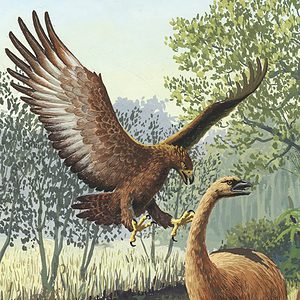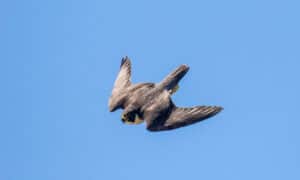Popular as backyard pets and livestock and native to the American tropics, muscovy ducks are the largest duck in the world. They’re easy to distinguish from other ducks by their unique facial features. Muscovies have caruncles, which are large, red fleshy parts around their beaks and eyes that are similar in appearance to the wattle of turkeys. Males tend to grow their caruncles before females and these typically grow to be larger. A male muscovy duck is referred to as a drake, while a female is called a hen. The differences between the sexes go beyond names and caruncles, so let’s take a closer look at the male vs female muscovy duck.
Comparing a Male and Female Muscovy Duck
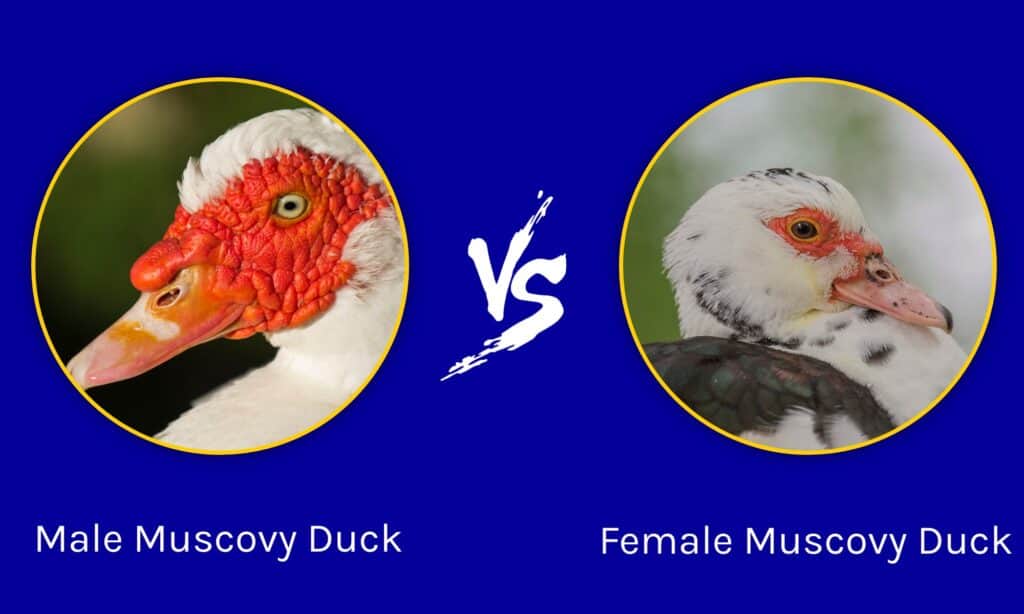
| Male Muscovy Duck | Female Muscovy Duck | |
|---|---|---|
| Size | 10-15 lbs, 31 in average | 5-7 lbs, 23 in average |
| Morphology | Straight, flat and wide bill. Grow feathers later. Wide, u-shaped tail. Large mass of caruncles that develops early. | Curvy, pointy and narrow bill with a ridge. Grow feathers earlier. Narrow, v-shaped tail. Small mass of caruncles in a mask around eyes that develops later. |
| Behavior | May provide protection and food for ducklings, Capable fliers but may fly short distances due to heavier bodies. | Perform nest defense and raise ducklings. Excellent fliers average over 50 mph. |
| Vocalizations | Hoarse, breathy hiss | Quiet, trilling coo |
Key Differences Between a Male and Female Muscovy Duck
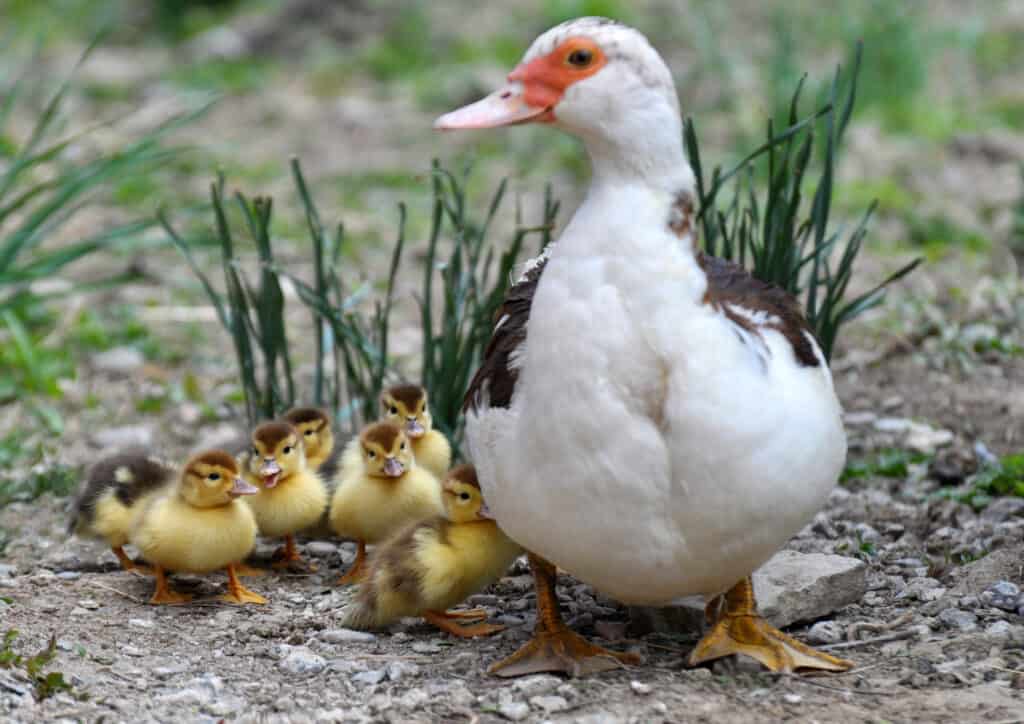
Determining the sex of ducklings is difficult, but
sexual dimorphism
becomes more apparent in adult muscovies.
©iStock.com/Orest Lyzhechka
Determining the sex of day-old ducklings is near impossible without the expertise of a trained veterinarian, but over the course of a couple weeks differences begin to emerge that will let you know whether the duck in question is a female or a male. Muscovies actually cannot be sexed the way other types of ducks can. There is even some debate as to whether these weight waterfowl can truly even be classified as ducks. So what traits and behaviors should you look for when hoping to determine the gender of these unique aquatic birds?
Male vs female muscovy duck key differences include their size, morphology, behavior and vocalizations. They grow to different weights, have slightly different bills shapes and tail feathers, but listening to their entirely unique sounds is likely the easiest way to truly distinguish a male from a female.
Male vs Female Muscovy Duck: Size
As the largest duck in the world, muscovy ducks can reach an impressive weight of fifteen pounds. Specifically, males often grow to this weight while females tend to be significantly smaller. The average female muscovy duck weighs about six pounds. This sixe difference starts to present itself at around five to eight weeks. Male muscovies tend to have larger feet and thicker legs than the females, whose feet are often smaller and legs more slender.
Male vs Female Muscovy Duck: Morphology
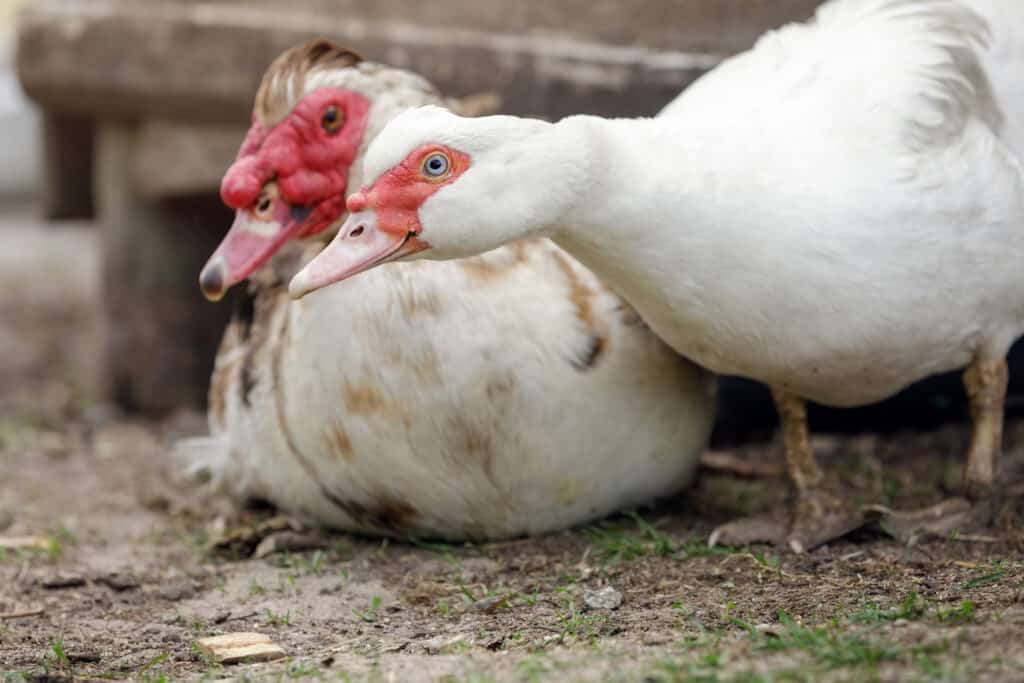
There is usually a clear difference in caruncle size between male and female muscovy ducks.
©iStock.com/Linas Toleikis
Before about eight weeks of age, the only way of truly sexing ducklings is by vent sexing. This is only to be done by a trained professional because improperly performing the test can be dangerous to the duckling and has a high chance of error. This test is easiest on day-old ducklings and involved inverting the ducklings vent or cloaca to show their sexual organs.
A morphological clue that develops as early as two to three weeks is bill shape. Male muscovy ducks tend to have a straight, flat and wide bill while those of females are usually curvier, pointy and narrow, and have a ridge down the middle. This difference is subtle but can be helpful when determining sex.
Feather growth is a reliable method for sexing muscovy ducks. This difference shows up around four weeks of age. Female muscovy duck feathers grow significantly faster and show up earlier than those of the males. When observing your muscovies, look for the first ducks to sprout wings, tail and belly feathers, they’re likely females.
Once fully feathered, at about twelve weeks old, male and female muscovies will show differences in tail feathers. Males have tails that are wide and u-shaped, while females have more narrow, v-shaped tails that taper more sharply. Females may fan their tails at times and males can hold thiers to a pointier position mimicking the females. As adults, the caruncles will be clearly different between the sexes. Those of the males will be approximately double the size of the female caruncles. Males grow a large mass of caruncles. Females usually only develop a red mask of them around their eyes.
Male vs Female Muscovy Duck: Behavior
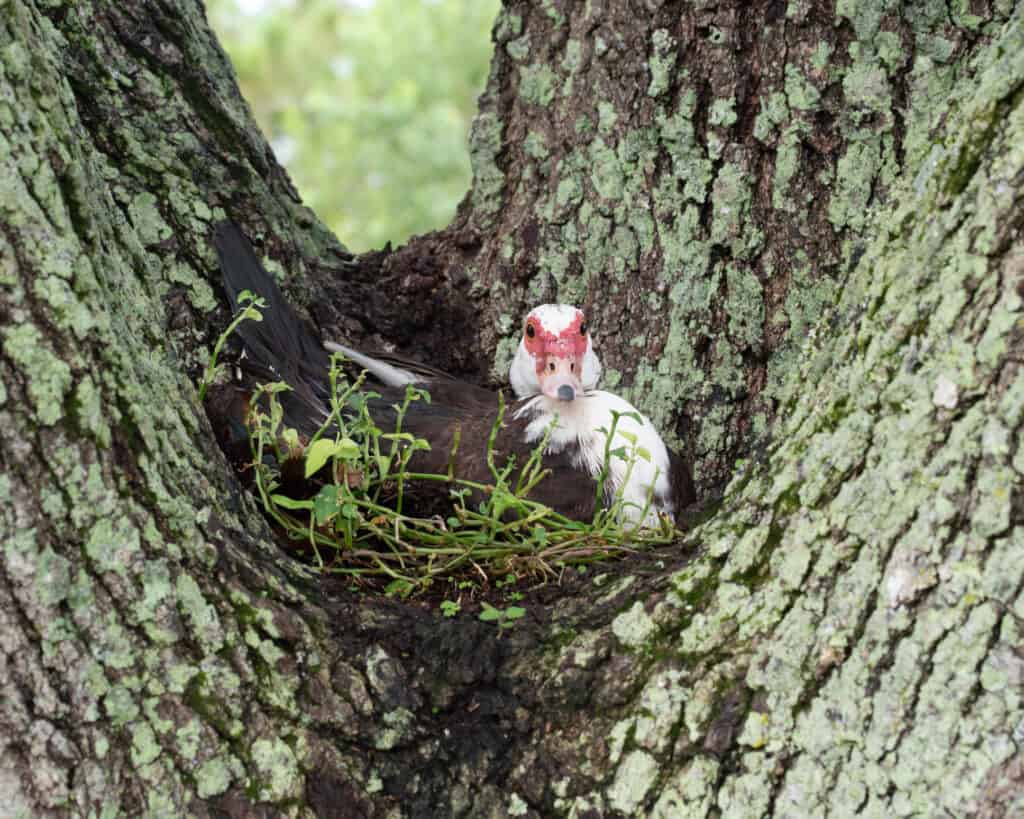
Female muscovy ducks will nest in trees, on the ground or in a nest box.
©iStock.com/dossyl
Both male and female muscovy ducks will investigate nest boxes out of curiosity, so a bird showing interest in the nest doesn’t necessarily mean it’s a female. However, if the duck is laying down in the nest along with scratching and scraping it is a pretty clear sign that it’s a female.
Around seven months of age muscovies start mating. After a successful mating, female muscovies will lay 8 to 15 eggs. In the wild, female muscovies perform most of the duties of nest defense and of raising the ducklings. They may even take on the duties of raising extra eggs snuck into her nest by black-bellied whistling ducks. The drake will often stay near the brood for a period of several weeks, walking with the young in search of food and providing protection.
Both wild and domesticate muscovy ducks are excellent fliers and can fly at a speed of 40 to 60 miles per hour. However, females tend to be better at flying than the males and average over 50 miles per hour. Males may only lift off for short distances, due to their heavier bodies. Both male and female juveniles can fly up to 80 mph since they are lightweight and full of energy.
Male vs Female Muscovy Duck: Vocalizations
Both male and female muscovy ducks vocalize but they make entirely different sounds. Drakes have a hoarse and breathy hiss and the hens let out a quiet trilling coo. Males lose their voices for a short time as they transition to adulthood. As adults they develop their strong hiss or breathy huff. When observing your muscovies it will be easy to discern this from the melodic murmurings of the females.
The photo featured at the top of this post is © iStock.com/Jacqueline Nix
Thank you for reading! Have some feedback for us? Contact the AZ Animals editorial team.




